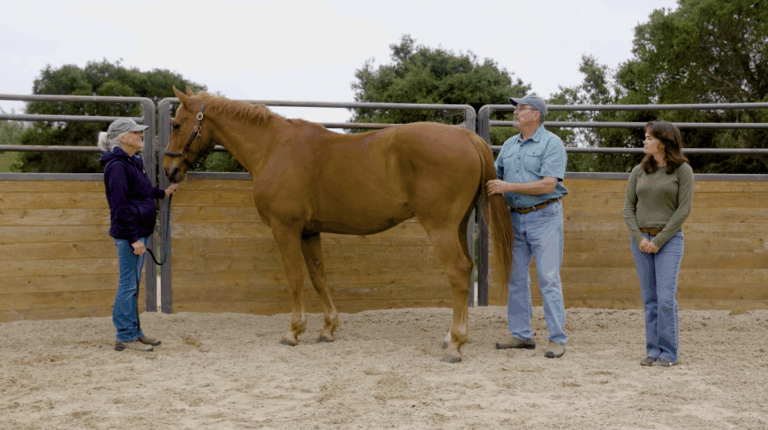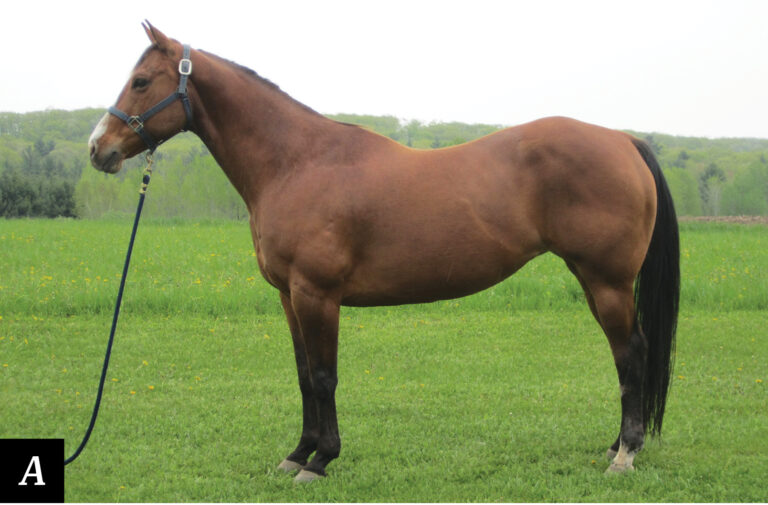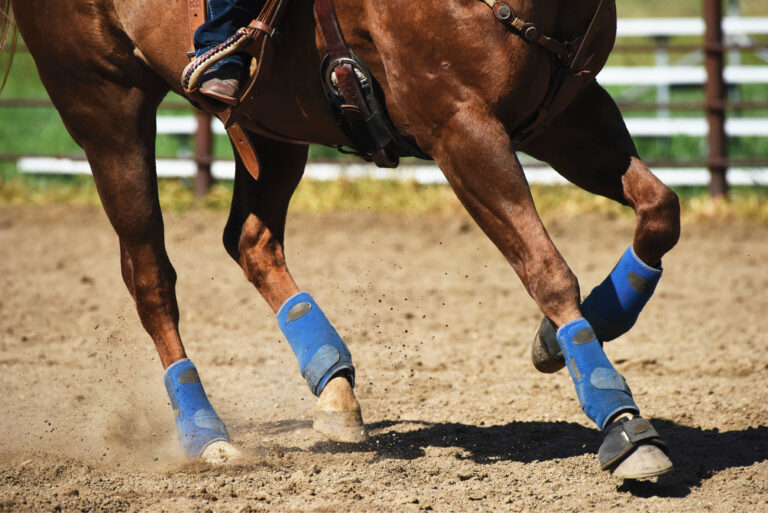It’s as routine as time, tide and taxes: Your normally placid gelding gets fired up the moment your farrier picks up his hammer. After just one tap on the hoof, it’s “Katie bar the door,” and you’re wondering how soon you’ll be shopping for a new farrier.
If this sounds familiar, don’t feel like the Lone Ranger. The pawing, snatching and panic can be frustrating and even dangerous.
It can also lead to health issues as your horse’s cortisol level skyrockets, taking his heart rate and blood pressure with it and possibly weakening his immunity. Colic could be next, and who wants that?
Here are five ways to minimize the stress of trimming and shoeing:
1. Practice, Practice, Practice
Working regularly with your horse in brief, relaxed sessions, handle him like a farrier long before his next appointment. Practice lifting and holding each foot in line for a while. Then gently pull his back feet into trimming position, always holding the toe by one hand and supporting the foot with a knee.
Place a keg shoe over the sole of each lifted hoof. Once your horse is used to that sensation, practice tapping on it with a small hammer (but without the nails!). An introduction to a hoof stand, if handy, would also help.
A little desensitization therapy goes a long way. Run your hands over your horse’s body often, throwing a lead shank over his neck, back and rump and holding him or tying him as much as you can. Repeat (and reward) until it becomes second nature.
2. Ban the Bronc
If you find yourself with a fidgety horse on the morning of your farrier visit, get the bucks out with an hour of turnout or 15 minutes on the longe line.
Another way to settle a nervous horse is to do some low-key groundwork prior to his appointment. Focus on any task that is familiar and simple for him to do, such as leading, halting, backing, etc. Make this a routine, and you’re sure to help him become more farrier friendly.
3. Set the Stage
Be proactive and intentional about your horse’s surroundings during his farrier visit. Select a level, well-lit area in which he feels comfortable. Ensure that it is free from distractions such as unfriendly horses, excessive traffic, dogs or cats underfoot, hanging laundry, a nearby riding lesson—you get the picture.
Flies can be irritating, too, but the worst distractions are arguably a horse’s internal clock and rumbling tummy. For this reason, avoid scheduling a farrier visit around feed time.
Everyday comforts like the presence of your horse’s “bestie” or a familiar radio playing in the background are worth including. Also consider the weather forecast, as a raging storm outside could add to your horse’s anxiety.
4. Handler Hints
Quiet confidence matters when holding your horse for the farrier! Avoid “choking up” on the lead shank, because a tight grip can communicate fear. And don’t be afraid to stroke his head and neck.

Stash that smartphone elsewhere and stay alert to your farrier’s requests and position. Stand on the same side of the horse as your farrier so you can keep an eye on things. And ensure that your horse is aware of your farrier’s location at all times—no zoning out allowed!
5. Soothing Solutions
When there’s not enough time for training or an emergency need arises, the right calming aid can help.
Before calling your vet for a sedative or tranquilizer—which should be a last resort—consider an effective natural alternative. Some of the more popular calming products include herbal pastes and magnesium supplements. There’s even a fast-acting gel with an equine-appeasing pheromone that can be rubbed in a horse’s nostrils when needed.
While training and desensitization are the best ways to address fear of farriers, calming aids can be handy tools on occasion, especially when used in conjunction with conditioning.




